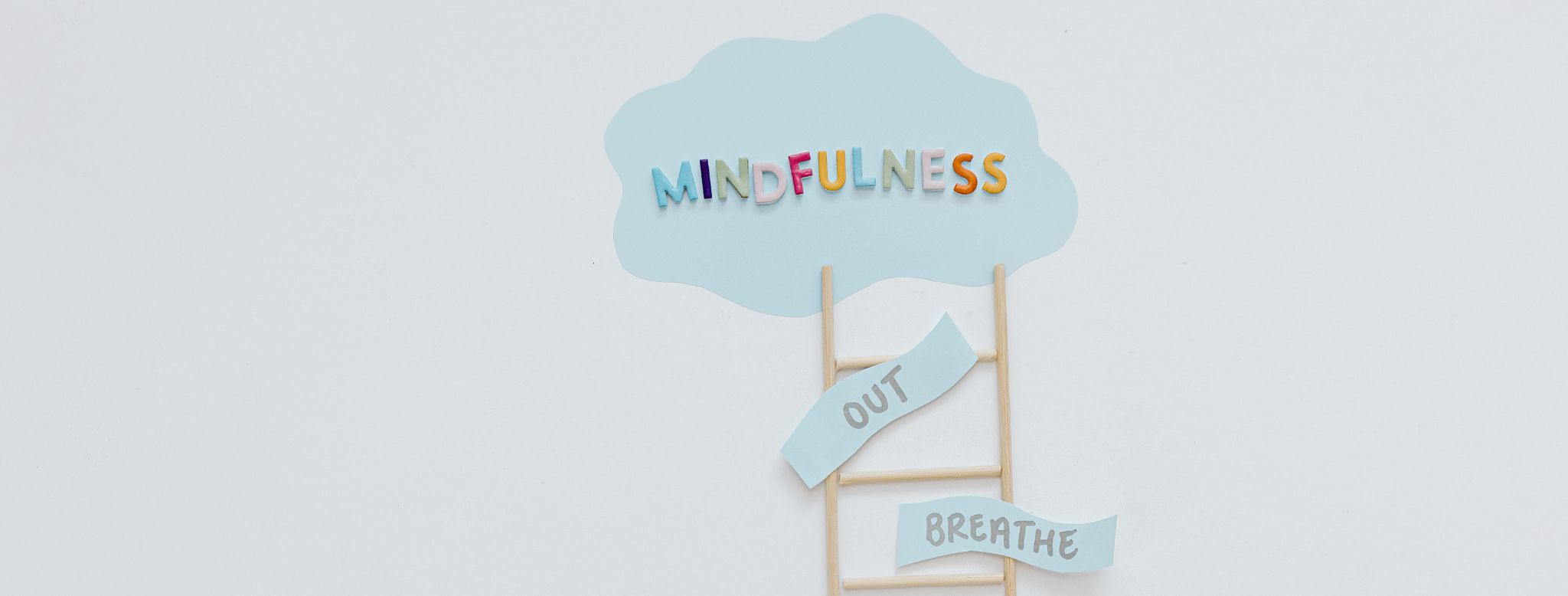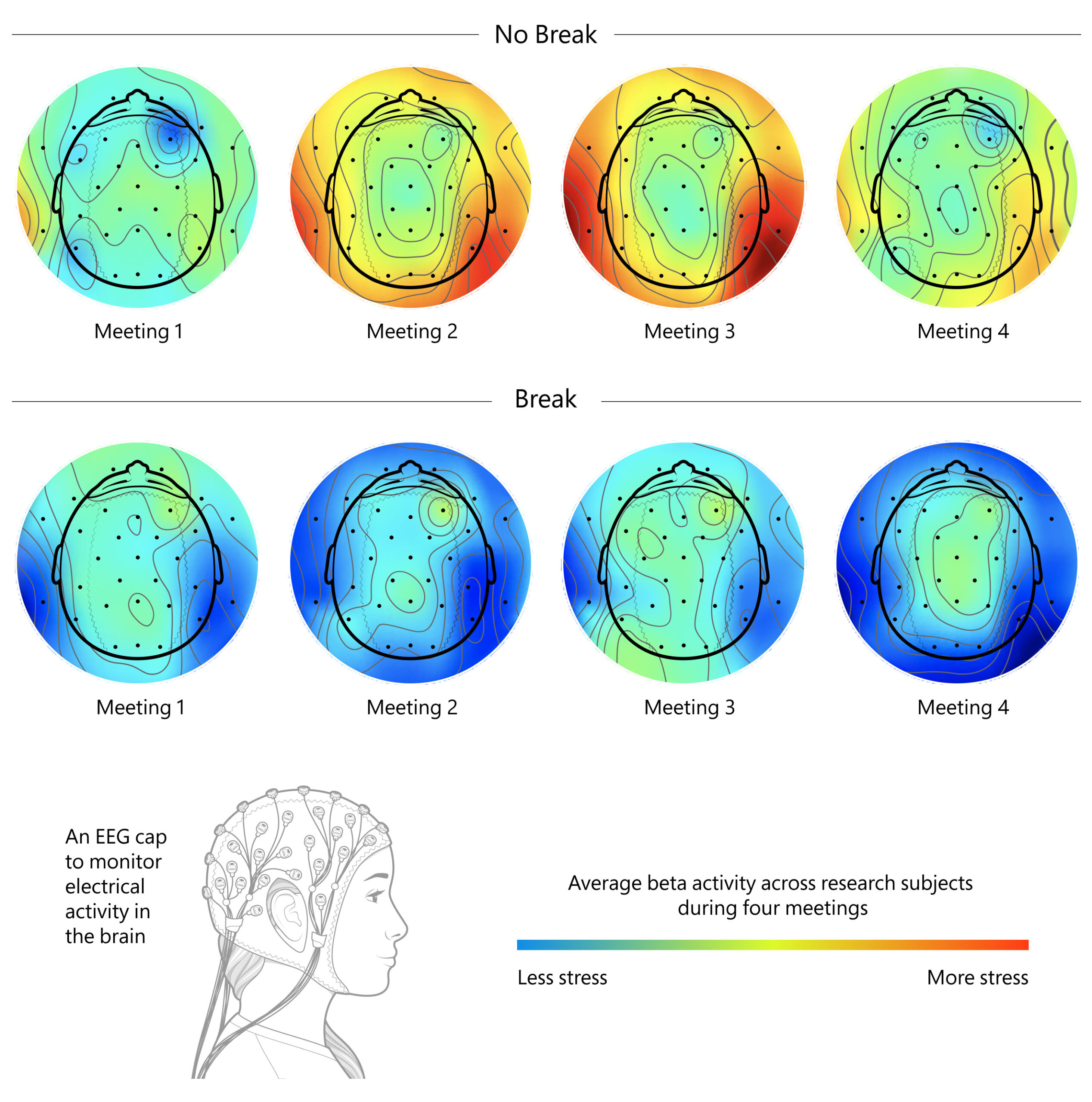What happens to your brain during back-to-back meetings

In the era of remote work, many of us find ourselves trapped in endless back-to-back meetings, leading to the widely recognized “Zoom fatigue.” But why are we so drained by these virtual encounters, and how can we navigate this more mindfully? Read on to discover the science behind the mental fatigue and practical solutions for a healthier work-life balance.
Researchers at Microsoft’s Human Factors Lab invited 14 participants to engage in back-to-back meetings over two days while wearing electroencephalogram caps, tracking electrical activity in their brains. On the first day of the experiment, participants attended four consecutive half-hour meetings without any breaks. On the second day, they participated in another set of four half-hour meetings, but this time they were given 10-minute meditation breaks between each session using a mindfulness app.
Key takeaways of the study
1. Brain stress accumulates during back-to-back meetings when we don’t take breaks.
During two consecutive hours of back-to-back meetings, there was a noticeable increase in the activity of beta waves, which are commonly associated with stress. In other words, the stress kept accumulating. But when participants took breaks to engage in meditation, the beta wave activity diminished, allowing the brain to “reset.” As a result, participants entered their next meeting in a more renewed and relaxed state.
2. Back-to-back meetings decrease our ability to focus and engage.
When taking breaks, brainwave patterns revealed positive levels in frontal alpha asymmetry – a pattern responsible for attention and engagement. Without breaks, these levels were negative, indicating that participants were withdrawn, or less engaged.
3. We’re the most stressed during abrupt meeting transitions.
For participants who didn’t take breaks, there was an increase in stress levels during transitions between meetings. Most of us will recognize this feeling – the anticipation of one meeting ending and the immediate shift to another, requiring a shift in focus and engagement. Those who took meditation breaks, by contrast, saw a decrease in stress during their breaks.
Long term effects of meditation on our brains
The human mind, as we know, wanders uncontrollably. When under stress, we often think about the things we did earlier, or things we could have done better. Many of us have a running to-do list in our heads. Thus, further increasing the feelings of overwhelm and anxiety. A 10-minute mindfulness break allows us to let go of these thoughts, be wholly present in the moment, acknowledging our surroundings in peace.
By practicing mindfulness regularly, our brains are physiologically rewired, creating greater mental resilience. Professor Hedy Kober from Yale University conducted a study asking her participants to recall intense negative memories from their past eight times over an eight-week period. The goal was to see if meditation training would affect their brain’s stress response.
The results were significant, showing notable changes in the amygdala—a brain region involved in the experience of negative emotions. Kober found that individuals who learned mindful meditation exhibited decreased activity in this region. This means that the part of the brain responsible for producing feelings of anxiety, fear, and general stress is physically smaller in the brains of expert meditators.
So, what do these studies tell us?
The growing scientific research on mindfulness meditation shows that this practice has a clear effect on the way our brains function and also the way it is structured over time. The goal is to transfer this skill and incorporate it into everyday activities, such as the breaks between work meetings. However, taking mindful breaks isn’t about grabbing a snack or scrolling on the phone; it’s about calming the mind and enhancing resilience.
For employers, it might be beneficial to schedule meetings at least five minutes past the hour, ensuring a minimum 5-minute break in between calls. Additionally, employees can be introduced to meditation techniques through the Mindletic mental health app, which offers a variety of mindfulness meditation, and soundscape meditation techniques.
Want to learn more about psychological safety at work and employee well-being? Reach out to our team and get a free consultation now.

